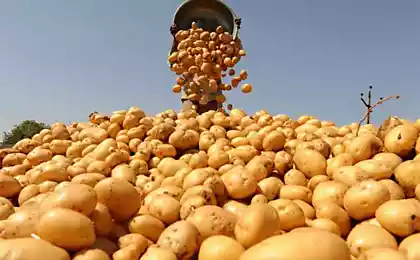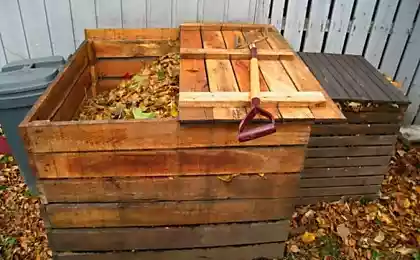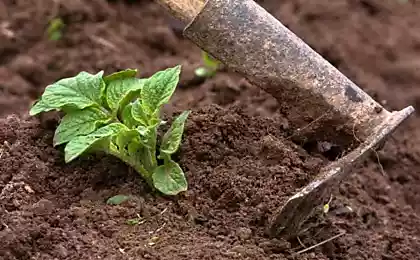552
How to properly dispose of the tops
Autumn came, and the gardener there were lots of tops — compost heap triumph, they swell: gohnet tops on the beds, in the garden, everywhere have to endure the dying stems armfuls. Yes, fallen birch leaves...
As a result, more and more questions from gardeners: what tops and what to do. Recommendations in books are many, and they contradict each other: either the greens need to take out the trash, or meticulously burn, or leave in place as mulch, it is possible to include in a compost pile — how?
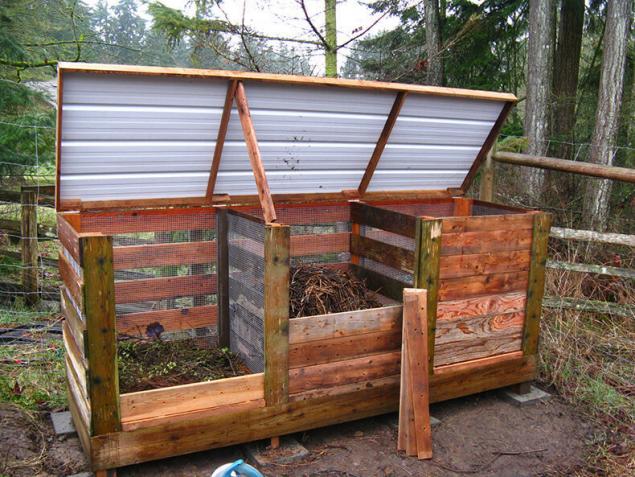
Practice shows that for most horticultural crops it is possible to prepare "General" compost and for some of the most vulnerable to diseases of crops (tomatoes, gladioli, etc.) compost, it is better to cook separately (for example, from rotten pine needles).
In the literature you will find a description of the two main ways to make compost: cold (long) and hot (fast). In fact, most of us in the garden is possible only cold as for hot need large amounts of green grass, and even crushed.
Green grass is different from the withered (like say, brown) the fact that it has more nitrogen, hence the green grass starts to decompose faster germs, and if it is folded into a huge pile, the inside warmed up, why, and disintegrates in a matter of weeks.
For comparison describe how to do the hot compost on the farm: sow and grow cereal grass, in autumn it is cut by the harvester, so that it poured into going behind a truck, Mellis-melcena, then it dumped on a concrete Foundation (in the form of an inverted letter "P"), where the tractor goes up and down it and tamp on a rolling basis, and when the height of this silo mountain reaches several meters, from top to shovel another layer of earth about two feet thick for insulation.
By the spring you can dig almost pure manure: soprusi silage has the same color and smell. I used this material for fertilizing garden planting — the effect was like manure. This way it's easier to compost grass in large estates, where they keep a huge area under the turf and mow them regularly.
Again, that is about the same we would get if in the summer we use green weeds and grass from the lawn to ferment in a barrel with grass fertilizer. This green grass is in itself fermented, but with small additions of nitrogen fertilizer this will happen increasingly, and fertilizer will be more nutritious.
Cold composting is the creation of compost heaps, from all sorts of accumulated plant residues. Usually these piles are two — one is filled during the summer, the second at this time brewing, and so from year to year, it turns out the biennial compost.
So what to do with autumn leaves?
Tops can be assembled simply without any processing to decompose right there in the beds to suppress the weeds and in spring to dig.
You can make a new compost pile or all collected autumn leaves to scatter on the summer compost pile (which is accumulated from the waste during the season), then cover it with earth and leave to decompose for one more season, until next fall.
But what about sick leaves and possible pests?
About what can I put in compost the leaves of plants suffering from scab, Phytophthora, Fusarium, powdery mildew and other "scary" diseases, I am convinced that you can fearlessly. In addition to practical experience are based on rational arguments.
First, all kinds of infections and pests feed on living plant tissue and in the compost they will have nothing to eat, and at 10-cm layer of soil they will not survive, in the best case will give the spores, which so fully in the soil and in the air.
Second, in light of the discovery that the fungi decomposing cellulose, produce antibiotics, even ridiculous happens: the pile of decomposing grass is the best choice for disinfection of the infection.
Thirdly, for the appearance of the disease on crop need not dispute the presence of the pathogen (they are always present in the environment), and that these disputes have received the course. This happens not always, depends on the characteristics and growing conditions of plants.
So we should not destroy spores, and to create normal conditions for the plants that they grow strong. And burn the tops — what's the point? It gives a psychological comfort, still all the controversy do not destroy, we only lose organic matter.
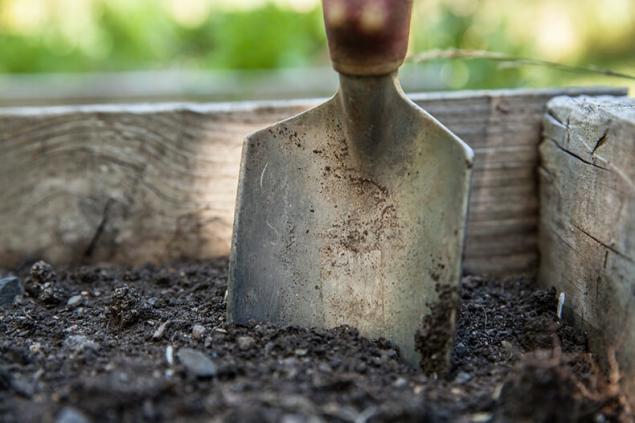
What are the nuances in the decomposition of compost?
Here are some tips for managing the decomposition of compost. The decomposition of any compost will accelerate additional nitrogen fertilizer (microbes like nitrogen as plants).
Any plant residue ever decompose and turn into humus (even moss, needles, duckweed, sawdust...): on the rate of decomposition is influenced by: moisture (compost should be watered), air (a lot better than the pit), temperature (compost pile decompose in the sun rather than the shade), roughness and size of plant residues.
Fastest decomposes newly grown grass (lawn grass and young weeds). Hay and fallen leaves decompose in the compost heap for about a year (and for digging into the ground in just 3-4 months).
How to strengthen a cell phone signal for Internet at the cottage
How to select potatoes seeds
The usual complex namastay compost heap of different plant residues, including food waste, decomposes in two years. The longest time — several years — degradable thick stems of corn, sunflower, rudbeckia, etc.
The presence of damp earth always accelerates decomposition of plant residues by about half, so the compost should pereseivat the usual earth and sprinkle it.published
Source: vk.com/wall-65997559?offset=120&owners_only=1&q=%23%D0%A0%D0%B0%D1%81%D1%82%D0%B8%D0%BC_%D0%BE%D0%B3%D0%BE%D1%80%D0%BE%D0%B4&w=wall-65997559_72541
As a result, more and more questions from gardeners: what tops and what to do. Recommendations in books are many, and they contradict each other: either the greens need to take out the trash, or meticulously burn, or leave in place as mulch, it is possible to include in a compost pile — how?

Practice shows that for most horticultural crops it is possible to prepare "General" compost and for some of the most vulnerable to diseases of crops (tomatoes, gladioli, etc.) compost, it is better to cook separately (for example, from rotten pine needles).
In the literature you will find a description of the two main ways to make compost: cold (long) and hot (fast). In fact, most of us in the garden is possible only cold as for hot need large amounts of green grass, and even crushed.
Green grass is different from the withered (like say, brown) the fact that it has more nitrogen, hence the green grass starts to decompose faster germs, and if it is folded into a huge pile, the inside warmed up, why, and disintegrates in a matter of weeks.
For comparison describe how to do the hot compost on the farm: sow and grow cereal grass, in autumn it is cut by the harvester, so that it poured into going behind a truck, Mellis-melcena, then it dumped on a concrete Foundation (in the form of an inverted letter "P"), where the tractor goes up and down it and tamp on a rolling basis, and when the height of this silo mountain reaches several meters, from top to shovel another layer of earth about two feet thick for insulation.
By the spring you can dig almost pure manure: soprusi silage has the same color and smell. I used this material for fertilizing garden planting — the effect was like manure. This way it's easier to compost grass in large estates, where they keep a huge area under the turf and mow them regularly.
Again, that is about the same we would get if in the summer we use green weeds and grass from the lawn to ferment in a barrel with grass fertilizer. This green grass is in itself fermented, but with small additions of nitrogen fertilizer this will happen increasingly, and fertilizer will be more nutritious.
Cold composting is the creation of compost heaps, from all sorts of accumulated plant residues. Usually these piles are two — one is filled during the summer, the second at this time brewing, and so from year to year, it turns out the biennial compost.
So what to do with autumn leaves?
Tops can be assembled simply without any processing to decompose right there in the beds to suppress the weeds and in spring to dig.
You can make a new compost pile or all collected autumn leaves to scatter on the summer compost pile (which is accumulated from the waste during the season), then cover it with earth and leave to decompose for one more season, until next fall.
But what about sick leaves and possible pests?
About what can I put in compost the leaves of plants suffering from scab, Phytophthora, Fusarium, powdery mildew and other "scary" diseases, I am convinced that you can fearlessly. In addition to practical experience are based on rational arguments.
First, all kinds of infections and pests feed on living plant tissue and in the compost they will have nothing to eat, and at 10-cm layer of soil they will not survive, in the best case will give the spores, which so fully in the soil and in the air.
Second, in light of the discovery that the fungi decomposing cellulose, produce antibiotics, even ridiculous happens: the pile of decomposing grass is the best choice for disinfection of the infection.
Thirdly, for the appearance of the disease on crop need not dispute the presence of the pathogen (they are always present in the environment), and that these disputes have received the course. This happens not always, depends on the characteristics and growing conditions of plants.
So we should not destroy spores, and to create normal conditions for the plants that they grow strong. And burn the tops — what's the point? It gives a psychological comfort, still all the controversy do not destroy, we only lose organic matter.

What are the nuances in the decomposition of compost?
Here are some tips for managing the decomposition of compost. The decomposition of any compost will accelerate additional nitrogen fertilizer (microbes like nitrogen as plants).
Any plant residue ever decompose and turn into humus (even moss, needles, duckweed, sawdust...): on the rate of decomposition is influenced by: moisture (compost should be watered), air (a lot better than the pit), temperature (compost pile decompose in the sun rather than the shade), roughness and size of plant residues.
Fastest decomposes newly grown grass (lawn grass and young weeds). Hay and fallen leaves decompose in the compost heap for about a year (and for digging into the ground in just 3-4 months).
How to strengthen a cell phone signal for Internet at the cottage
How to select potatoes seeds
The usual complex namastay compost heap of different plant residues, including food waste, decomposes in two years. The longest time — several years — degradable thick stems of corn, sunflower, rudbeckia, etc.
The presence of damp earth always accelerates decomposition of plant residues by about half, so the compost should pereseivat the usual earth and sprinkle it.published
Source: vk.com/wall-65997559?offset=120&owners_only=1&q=%23%D0%A0%D0%B0%D1%81%D1%82%D0%B8%D0%BC_%D0%BE%D0%B3%D0%BE%D1%80%D0%BE%D0%B4&w=wall-65997559_72541







